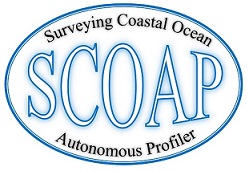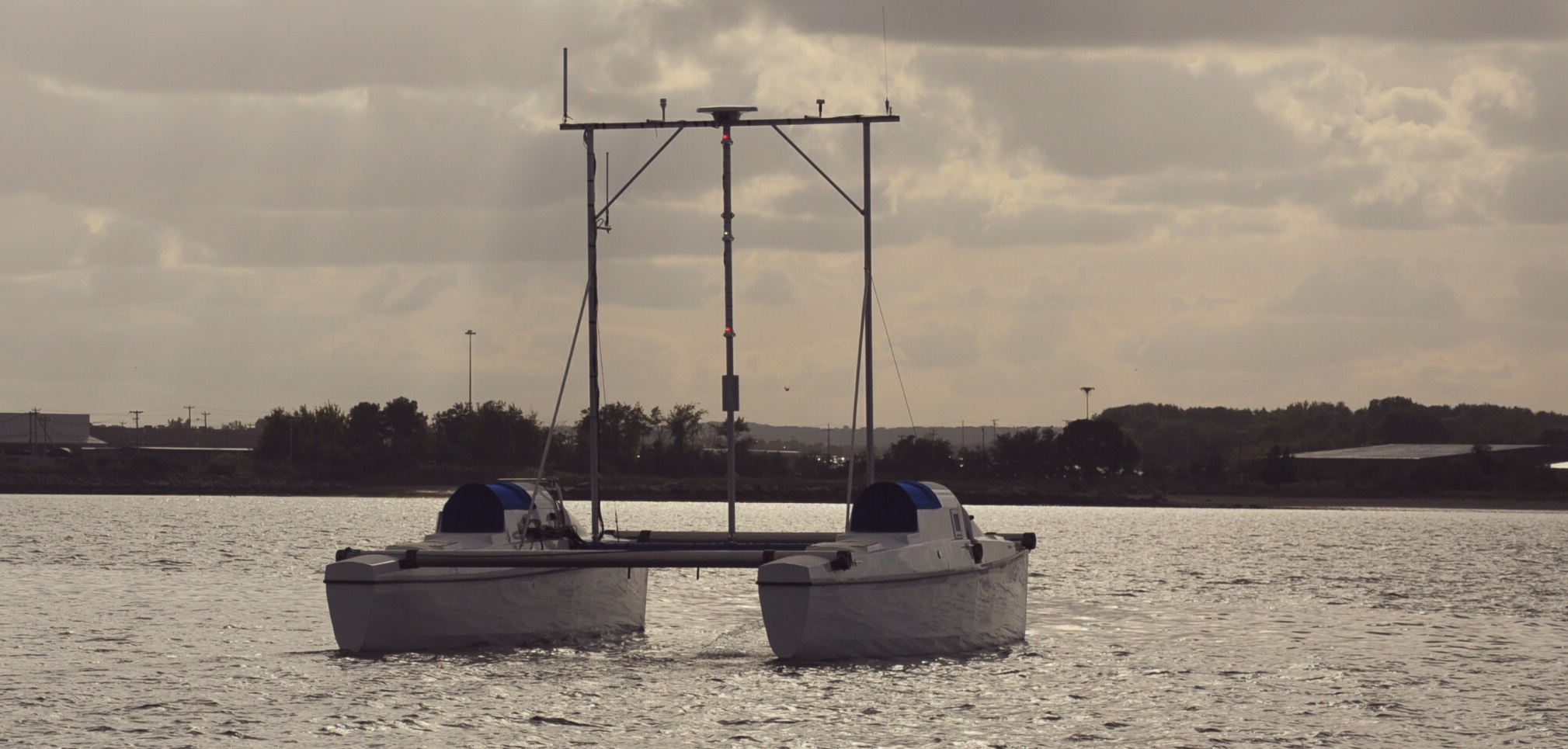
|
What need does SCOAP aim to fulfill? Traditional methods to collect oceanographic observations have been dominated by two approaches: mobile platforms such as research vessels, and fixed platforms such as moorings. One of the main strengths of research vessels is their ability to sample spatial structure in water properties and processes. However, they are too costly to operate in one area for sustained periods of time (typically no more than a few days). Conversely, the main strengths of moorings are long-duration records that are sampled frequently in time, but moorings are generally too costly to deploy in sufficient numbers to capture complex spatial variations that are common in coastal systems. Because marine autonomous surface crafts (MASCs) can host only automated sampling systems, they will never replace a fully equipped research vessel with its skilled crew. However, to the extent that catamaran MASCs such as SCOAP can merge the advantages of mobile platforms (spatial coverage) and fixed platforms (long durations), they have the potential to transform the way coastal oceanographers collect many core types of observations. For these reasons, although risks associated with some aspects of MASC operations remain challenging, there is potential for substantial return on investment in MASC technologies.  Upper West Passage, Narragansett Bay, Rhode Island. Photo: Amit Nehra. Various new mobile platforms have greatly advanced oceanographic sampling capabilities in recent years. Prominent examples include subsurface gliders, autonomous undersea vehicles, and wave-driven/non-catamaran MASCs. However, compared to these other platforms, catamaran MASCs have important advantages that are particularly applicable to operations in coastal areas, bays, and estuaries. Catamaran MASCs can operate in relatively shallow water. They can easily be equipped with sufficient propulsion to overcome strong currents that typify these tidally energetic systems. Their persistent surface presence and strong propulsion, together with vessel detection sensors such as the Automatic Identification System (AIS), make possible autonomous collision avoidance maneuvers in vessel traffic. Their large size permits fuel resources for long duration unattended deployments. It also means they can host and provide power to various sensors, without need for them to be miniaturized nor optimized for low-power operation. This includes research-quality meteorological sensors. Finally, catamaran MASCs can be relatively large, and therefore stable platforms in challenging sea states, a crucial advantage for collecting high quality oceanographic observations (for example, water-column velocities using a hull-mounted acoustic Doppler current profiler; meteorological parameters; a winched profiling system). The main remaining challenges for ASCs to overcome are seaworthiness in open coastal waters, long unattended deployments, and safe operations in vessel traffic. SCOAP is designed specifically to address these three needs. An example of the spatial coverage and resolution SCOAP deployments will target is a transect up to 15-20 km (7-9 miles) long, with stations each 1-2 km (0.5-1 mile) along it. This sampling is characteristic of requirements to detect and resolve spatial patterns in coastal and estuarine systems, for example differences in conditions that typify opposite sides of a broad estuary. The target temporal coverage and resolution is a few weeks duration or longer, with all stations on the transect sampled about 4 times a day. Sampling for such relatively long durations and at such relatively high frequencies is motivated by the need to separate tidal and non-tidal variability, a common challenge in these tidally energetic settings. At an average speed of 5 knots an ASC can achieve this spatial and temporal sampling. The design goal for SCOAP is hydrodynamic efficiency with sufficient fuel reserves to operate at 5 knots average speed for up to a month. |